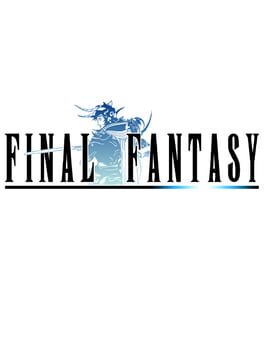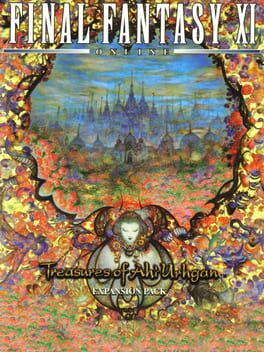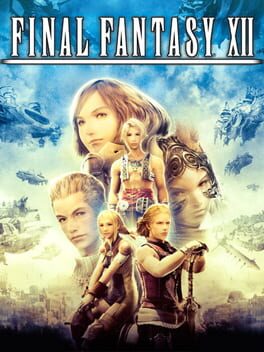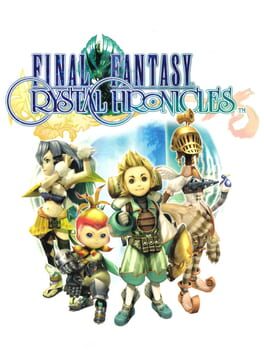

A port of Final Fantasy
A port of Final Fantasy for mobile devices, which features a re-translated script and an expanded inventory system, among other changes and fixes. It released in North America in 2010, the same time a port of Final Fantasy 20th Anniversary Edition was released for iPhone and iTouch.
Also in series
Reviews View More
So long as I'm covering classic RPGs whose mobile ports I played...
Final Fantasy 1 is a game that largely gets worse with each subsequent rerelease. At least, it was; I think Pixel Remaster walked back some of the Dawn of Souls changes. If you're a fan of Dawn of Souls FF1, that's fair, but so much of the original's intentionality was lost to the point that it almost reads like a different game. I personally like the ideas behind the original release best, but then this is the only version of this game I've completed to date, so... take my critiques with a grain of salt here.
Let's start with FF1 overall. This was the game that finally sold the idea of console RPGs to an international market. Yes, Dragon Quest was and will forever be king in Japan, and yes, Phantasy Star beat Final Fantasy to the punch by two-three years in international waters. I've made my own tastes clear on my preferred oldschool jRPG series. But there's no arguing with results: NES gamers in 1990 really resonated with the ideas the first Final Fantasy advanced. Deceptively expansive (if archetypal) story, straightforward (if buggy) combat, and (of course) the customizable party.
It's the synthesis and streamlining of ideas, I think, that made FF1 so well-received. Does it matter that these things all existed in various forms in preceding RPGs? This game, even moreso than Dragon Quest before it, made all the complex systems originating in Dungeons & Dragons nice and easy for a player to wrap their head around.
This isn't to say that there wasn't room to further simplify, though, which is where the Dawn of Souls updates come in. Originating in the GameBoy Advance's "Final Fantasy I & II: Dawn of Souls" rerelease, many of Final Fantasy's systems were overhauled to "modernize" the game for the players of the early 00s. A few of these are appreciated - for example, not having poisoned party members shuffle to the back of the roster, or having to pay for potions
one
at
a
time.
But the major game-changer comes in the game's magic system. In the original, magic follows D&D's example, where casters get a limited amount of spell uses per day (I'll refer to these as "Spell Charges"). So, for example, a White Mage may only be able to cast Level 1 White Magic, such as CURE, four times before running out of Spell Charges. The player will then need totake a long rest stay at an Inn in order to recover these charges.
Dawn of Souls backported the Magic Point system used in later games (and which Dragon Quest had made standard anyway). As of the GBA release, "Cure" no longer costS one of the White Mage's Level 1 Spell Charges, but rather a fixed amount of Magic Points pulled from a massive pool. MP-restoring items like Elixirs were also backported from later FF titles into this game.
This breaks the game's intended difficulty scaling. The game was designed around the restrictive Spell Charge system rather than the much looser Magic Point system. Players were meant to struggle managing their Spell Charges while diving deep into dungeons, making areas like the Undersea Ruins and the Chaos Shrine particularly harrowing. Late-game weapons like the Thor Hammer and Heal Staff, which grant infinite uses of these spells, were so useful because they existed adjacent to this system.
By way of example, there's a particular hallway in the Earth Dungeon where every step will result in an encounter with a Giant. In the original game, it's sort-of a sucker's trap, though also a self-imposed challenge and test of the player's moxie, dragging their party through a harrowing stretch of encounters. Following Dawn of Souls, it's a viable grinding spot, not really that insane of a challenge.
Another change I wanna grumble about is with the Sky Castle. This isn't a consequence of Dawn of Souls, and actually this is something most versions after the NES release have tripped over. The Sky Castle in the original represented a brief, inexplicable genre shift, à la Ultima 1: the "Sky Castle" is actually a futuristic satellite, orbiting the planet. That bit where you can see the four Crystals, and their point of confluence at the Chaos Shrine? Made possible because you were in space and had an eagle-eye view of the surface through visual rendering. This is also the justification for Warmech's existence - a sci-fi foe for a sci-fi dungeon. Of course, this theming was lost, and the Sky Castle just became a castle with propellers floating in the stratosphere.
I'm hyper-fixating on things that were changed, but while these are pretty important things to me, much of what FF1 was is still there. The character customization, the easter eggs, the D&D influence (it's just a bit more subtle)... In particular, the surprisingly poignant ending, where the game asks us to remember the Warriors of Light and their adventures is still there, just as good as before. I would not at all call this an equivalent experience to the original release, and I still consider myself on the hook for playing it on NES (or maybe PS1? The version in "Final Fantasy Origins" still uses Spell Charges). But if you're looking to play any version of FF1, this one's solid enough.
And, heck, maybe that MP system is better suited for mobile than the Spell Charges system anyway.
Final Fantasy 1 is a game that largely gets worse with each subsequent rerelease. At least, it was; I think Pixel Remaster walked back some of the Dawn of Souls changes. If you're a fan of Dawn of Souls FF1, that's fair, but so much of the original's intentionality was lost to the point that it almost reads like a different game. I personally like the ideas behind the original release best, but then this is the only version of this game I've completed to date, so... take my critiques with a grain of salt here.
Let's start with FF1 overall. This was the game that finally sold the idea of console RPGs to an international market. Yes, Dragon Quest was and will forever be king in Japan, and yes, Phantasy Star beat Final Fantasy to the punch by two-three years in international waters. I've made my own tastes clear on my preferred oldschool jRPG series. But there's no arguing with results: NES gamers in 1990 really resonated with the ideas the first Final Fantasy advanced. Deceptively expansive (if archetypal) story, straightforward (if buggy) combat, and (of course) the customizable party.
It's the synthesis and streamlining of ideas, I think, that made FF1 so well-received. Does it matter that these things all existed in various forms in preceding RPGs? This game, even moreso than Dragon Quest before it, made all the complex systems originating in Dungeons & Dragons nice and easy for a player to wrap their head around.
This isn't to say that there wasn't room to further simplify, though, which is where the Dawn of Souls updates come in. Originating in the GameBoy Advance's "Final Fantasy I & II: Dawn of Souls" rerelease, many of Final Fantasy's systems were overhauled to "modernize" the game for the players of the early 00s. A few of these are appreciated - for example, not having poisoned party members shuffle to the back of the roster, or having to pay for potions
one
at
a
time.
But the major game-changer comes in the game's magic system. In the original, magic follows D&D's example, where casters get a limited amount of spell uses per day (I'll refer to these as "Spell Charges"). So, for example, a White Mage may only be able to cast Level 1 White Magic, such as CURE, four times before running out of Spell Charges. The player will then need to
Dawn of Souls backported the Magic Point system used in later games (and which Dragon Quest had made standard anyway). As of the GBA release, "Cure" no longer costS one of the White Mage's Level 1 Spell Charges, but rather a fixed amount of Magic Points pulled from a massive pool. MP-restoring items like Elixirs were also backported from later FF titles into this game.
This breaks the game's intended difficulty scaling. The game was designed around the restrictive Spell Charge system rather than the much looser Magic Point system. Players were meant to struggle managing their Spell Charges while diving deep into dungeons, making areas like the Undersea Ruins and the Chaos Shrine particularly harrowing. Late-game weapons like the Thor Hammer and Heal Staff, which grant infinite uses of these spells, were so useful because they existed adjacent to this system.
By way of example, there's a particular hallway in the Earth Dungeon where every step will result in an encounter with a Giant. In the original game, it's sort-of a sucker's trap, though also a self-imposed challenge and test of the player's moxie, dragging their party through a harrowing stretch of encounters. Following Dawn of Souls, it's a viable grinding spot, not really that insane of a challenge.
Another change I wanna grumble about is with the Sky Castle. This isn't a consequence of Dawn of Souls, and actually this is something most versions after the NES release have tripped over. The Sky Castle in the original represented a brief, inexplicable genre shift, à la Ultima 1: the "Sky Castle" is actually a futuristic satellite, orbiting the planet. That bit where you can see the four Crystals, and their point of confluence at the Chaos Shrine? Made possible because you were in space and had an eagle-eye view of the surface through visual rendering. This is also the justification for Warmech's existence - a sci-fi foe for a sci-fi dungeon. Of course, this theming was lost, and the Sky Castle just became a castle with propellers floating in the stratosphere.
I'm hyper-fixating on things that were changed, but while these are pretty important things to me, much of what FF1 was is still there. The character customization, the easter eggs, the D&D influence (it's just a bit more subtle)... In particular, the surprisingly poignant ending, where the game asks us to remember the Warriors of Light and their adventures is still there, just as good as before. I would not at all call this an equivalent experience to the original release, and I still consider myself on the hook for playing it on NES (or maybe PS1? The version in "Final Fantasy Origins" still uses Spell Charges). But if you're looking to play any version of FF1, this one's solid enough.
And, heck, maybe that MP system is better suited for mobile than the Spell Charges system anyway.





